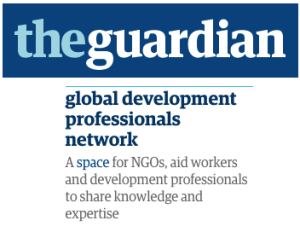 Earlier this month, the Center for Plain Language named 14 winners at the 2018 ClearMark Awards. These awards recognize effective plain language writing and information design that help people find information, understand it, and act confidently based on what they’ve learned. As with every year, the winners include a range of communication materials, from a knee surgery decision aid to a law school’s bylaws—and a newsletter I’m quite fond of, called We
Earlier this month, the Center for Plain Language named 14 winners at the 2018 ClearMark Awards. These awards recognize effective plain language writing and information design that help people find information, understand it, and act confidently based on what they’ve learned. As with every year, the winners include a range of communication materials, from a knee surgery decision aid to a law school’s bylaws—and a newsletter I’m quite fond of, called We 
Here is what the Center for Plain Language says about plain language:
A communication is in plain language if its wording, structure, and design are so clear that the intended readers can easily find what they need, understand what they find, and use that information.
The definition of “plain” depends on the audience. What is plain for one audience may not be plain at all for another audience.
Our measure of plain language is behavioral: Can the people who are the audience for the material quickly and easily:
- Find what they need
- Understand what they find
- Act on that understanding
Plain language is more than just short words and short sentences – although those tactics are important guidelines for clear communication. When you create material in plain language, you also organize it logically for the audience. You consider how well the layout of your pages or screens works for the audience. You anticipate their questions and needs.
When people have complimented me for my communications abilities, whether writing press releases or editing a massive United Nations report or writing a technical manual on how to use an online tool, I say thank you and, if I think they might care to know it, that it’s a dedication to plain language that makes me a good communicator.
I’m on a constant quest to improve my communications skills, and learning from plain language communicators has been better than any course I have ever taken since my journalism classes back at Western Kentucky University a million years ago. I loathe jargon, text and graphics that are more about making the author or host look important or an expert than trying to help people connect with an idea, change a mind, encourage a new way of doing something, etc.
- How folklore, rumors, urban myths and organized misinformation campaigns interfere with development and aid/relief efforts, and government initiatives.
- Recommendations for UN & UNDP in Ukraine to use Twitter, Facebook, Blogs and Other Social Media to Promote Reconciliation, Social Inclusion, & Peace-Building in Ukraine (PDF).
- A comprehensive list of questions to answer in preparation for reporting to donors, the media & general public.
- For Local City & County Governments: You Should Be Using Social Media. Here’s How.
- How we communication online: creating intimacy (not in a creepy way).
- My work in international development
- Yes, I really did read that report you wrote.
- My answer to the question “How did you get a job with the UN?!“

